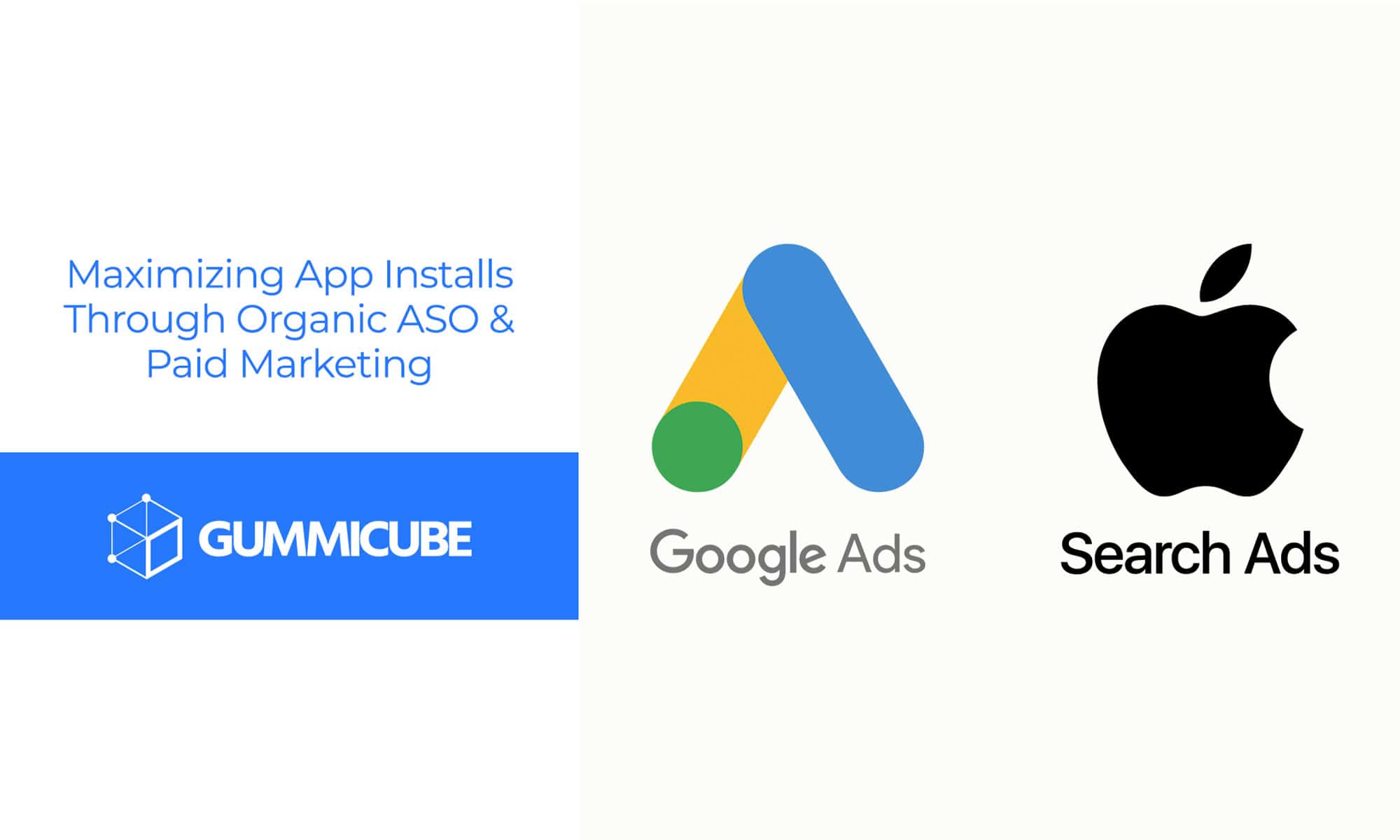We’ve partnered with Gummicube to bring you a series of blog posts covering various areas of app marketing. This post explores how App Store optimisation can help to bring your app to a wider audience.
When marketing your app through App Store optimisation, you can help your app secure traction by supporting your organic efforts with paid marketing. For this to work, it’s important that you understand the influence certain channels can have on your organic efforts. In this article, we’ll explore the relationship between paid marketing and organic growth, as well as provide suggestions on marketing channels to consider.
How Organic Algorithms Work
Apple and Google use different algorithms, but both look at multiple factors when determining an app’s search relevance. These factors include (but are not limited to) the app’s metadata, click-through-rate (CTR) and update frequency. The more relevant an app is, the higher its rank will be in searches. The opposite is also true, as a less relevant app will have a lower ranking.
In order to get discovered in searches, apps need to establish relevance for keywords users are searching for. Since 70% of app discoverability happens in searches, this is essential for an app to reach as wide an audience as possible.
App developers can help ensure their apps establish relevance by optimizing their metadata, running A/B tests on their creatives and managing their user reviews. Each of these plays a role in helping your app rank better and for more keywords. Additionally, optimizing these factors can help build relevance for paid marketing.
How Organic Relevance Influences Paid (and Vice Versa)
When determining the keywords served for an Apple Search Ads or Google Ads bid, the algorithms look at an app’s keyword relevance as well as the amount of money the developer is bidding with. While organically-established relevance helps improve an ad’s chances of being selected, paid marketing can also influence an app’s organic growth.
The more traffic and conversions are driven to an app, the faster the stores’ algorithms will merchandise it for keywords. This can be beneficial for new apps, as the increased traffic and clicks can help them establish organic keyword relevance early on.
Incorporating Apple Search Ads and Google Ads
Apple Search Ads and Google Ads are the native advertising platforms for the two companies. One key factor that makes them more attractive than other platforms is how they are connected to the organic ranking algorithms. The algorithms that determine relevance take into account both an app’s organic and paid click-through-rates.
In order to make Search Ads and Google Ads work efficiently, the apps need a strong organic foundation. In other words, paid marketing can help organic growth, but cannot function effectively if the app does not already have an organic foundation.
Making Search Ads and Google Ads Work for You
The Search Ads and Google Ads algorithms will only serve a paid bid on a keyword if it is relevant. With Apple and Google, the amount of money spent on a campaign is of secondary importance to its relevance – if an app is irrelevant for a keyword, its chances of being served are almost nonexistent.
Should an app’s ad get served, it may get retracted if it receives a low click-through-rate when compared to other apps. This indicates to the algorithms that it is less relevant than other apps, who would then be prioritized.
One way of establishing relevance is by optimizing an app’s metadata. Doing so can help the algorithms better understand an app when determining which keywords it is relevant for.
Additionally, it’s critical to optimize creative assets. Customer-facing visuals like the screenshots and icons play a major role in conversion and CTR for both paid and organic discovery.
By improving Search Ads and Google Ads performance, the apps can gain more paid users while improving their organic rankings through the improved CTR.
Conclusion
Apps can greatly increase their chances of being discovered by running organic and paid marketing together. Before that, however, developers and marketers need to understand how the App Store and Play Store algorithms work. This understanding helps them see the relationship between the app’s page listing, keywords, creatives, and paid efforts, including how each one can influence the others.
While there are several channels to explore, Apple Search Ads and Google Ads are two powerful options. Their direct linkage to the App Store and Play Store ranking algorithms can help apps grow organically. Keep in mind that an organic foundation will provide the building blocks you need to make paid marketing more efficient – if the organic relevance is weak, the paid efforts will have limited opportunities to grow.
